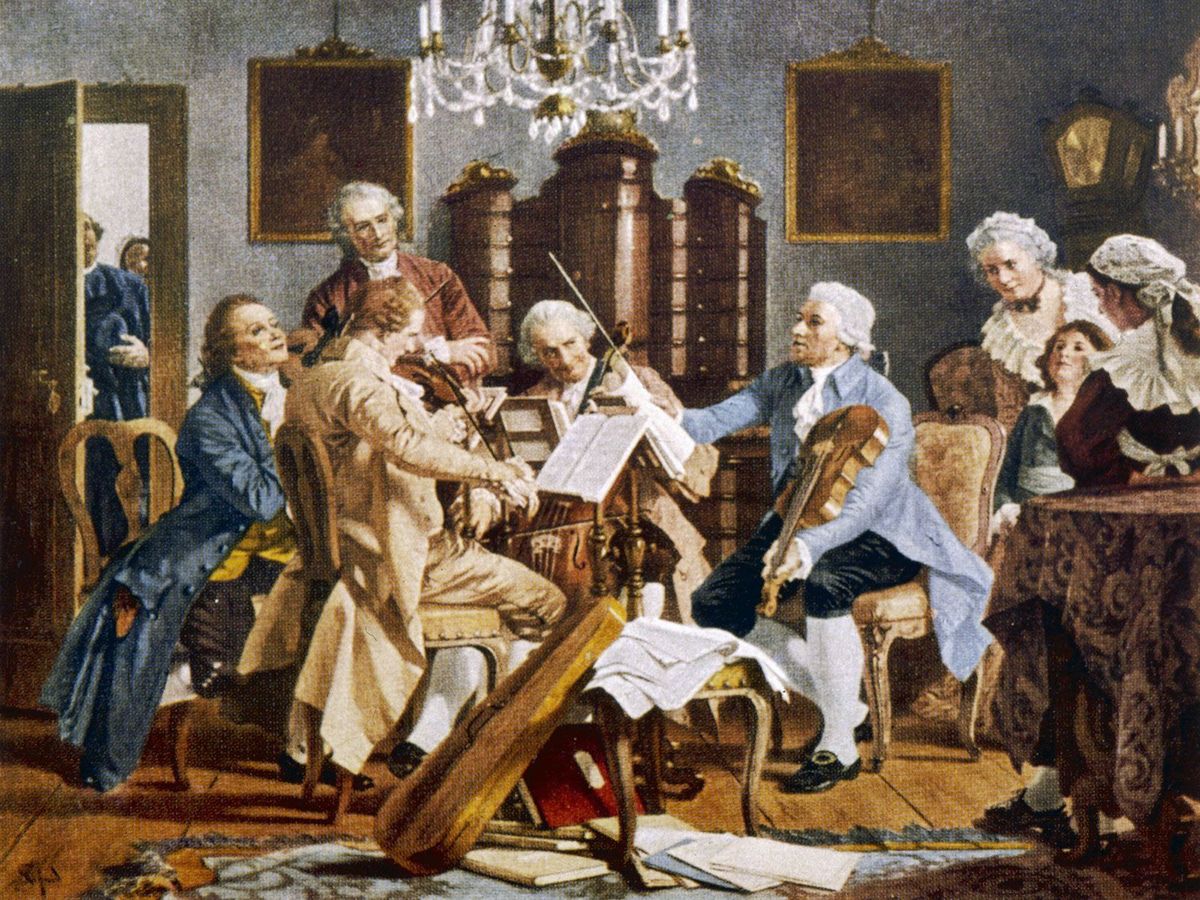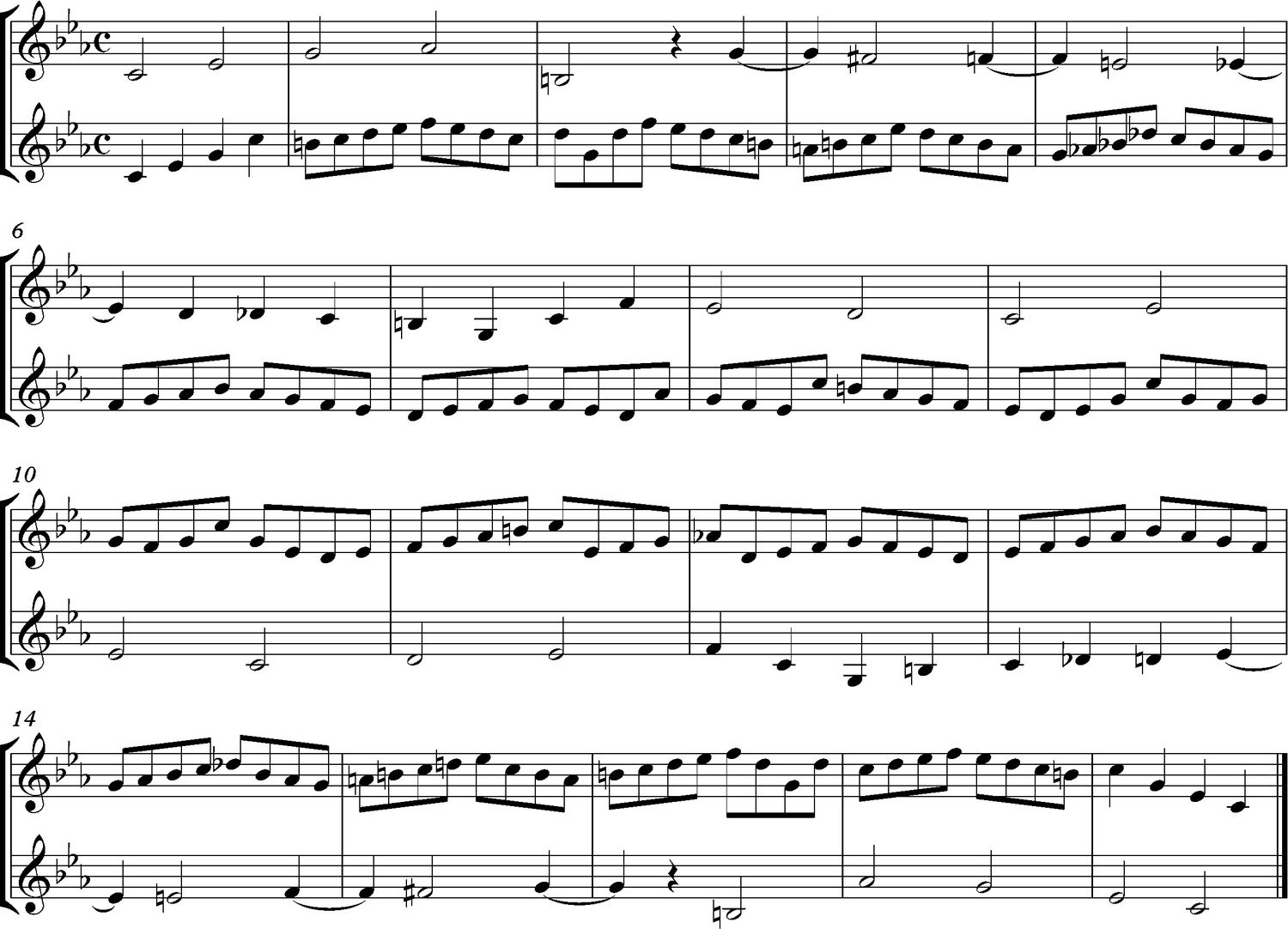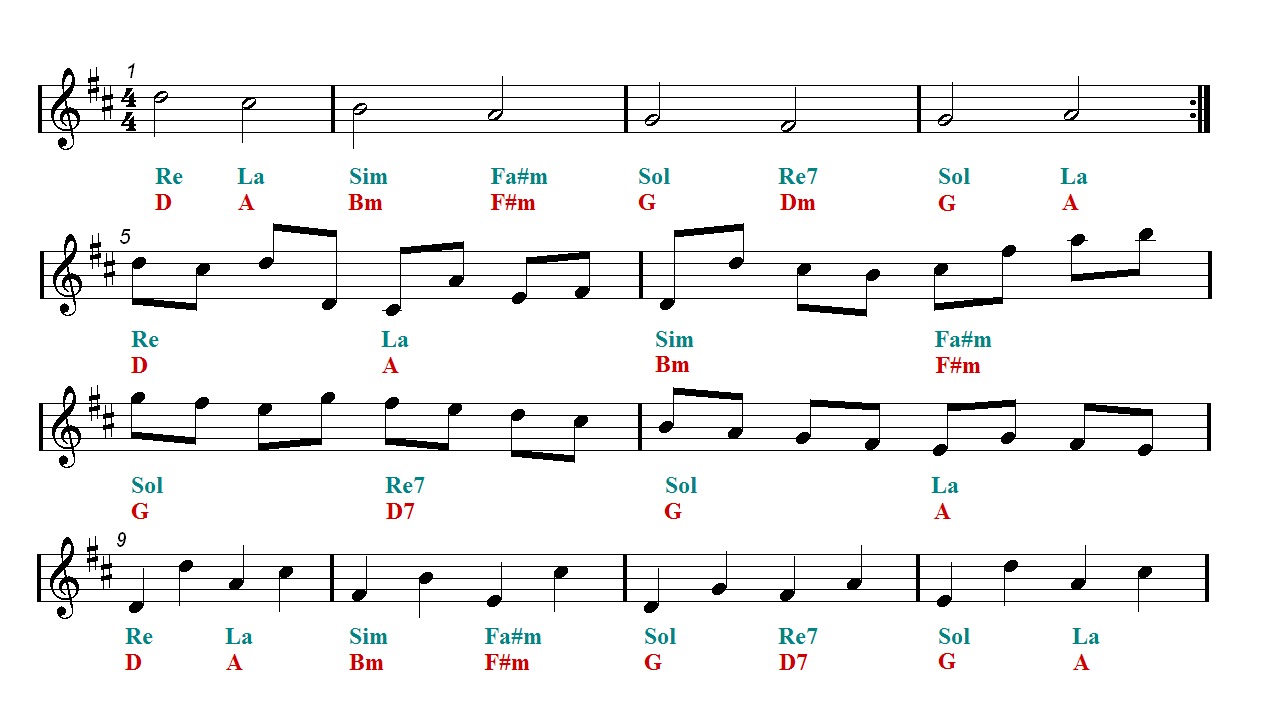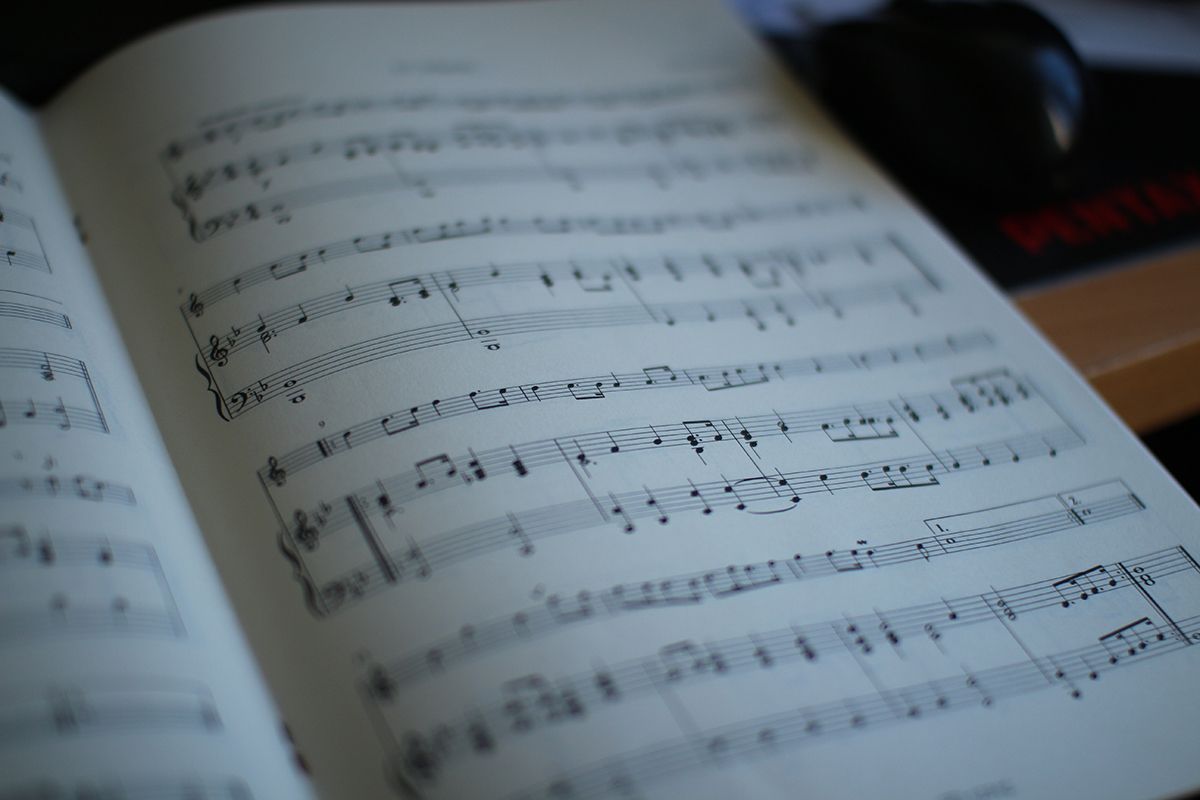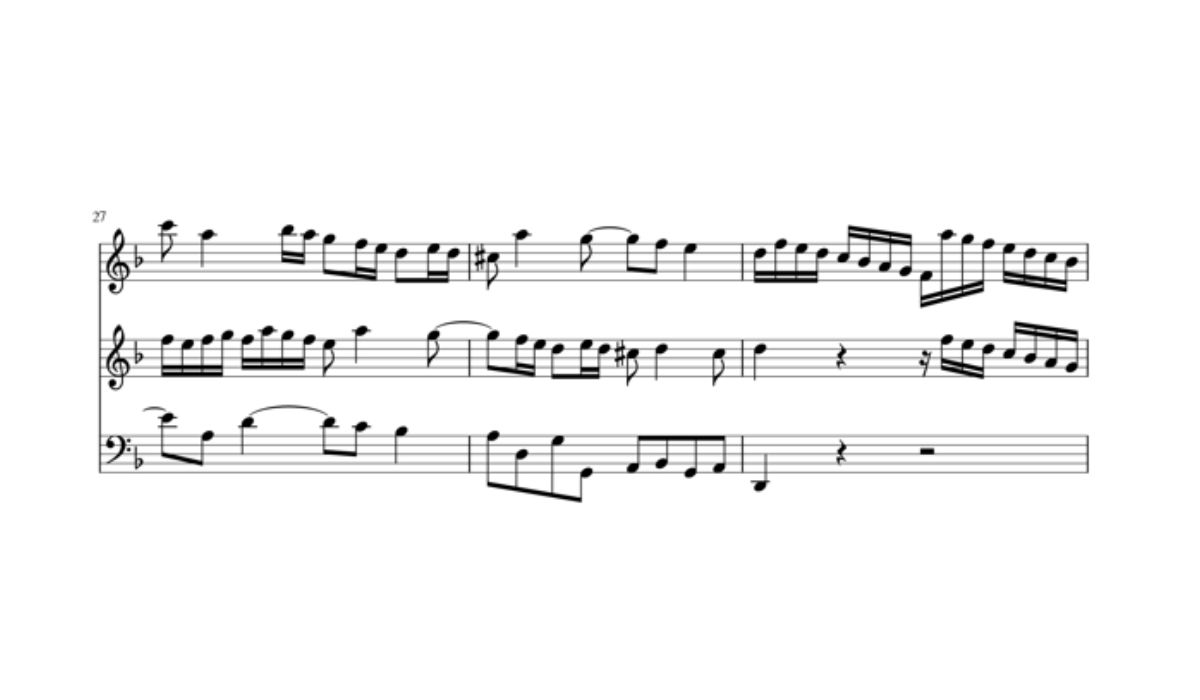Home>Production & Technology>Music Theory>What Is A Period In Music Theory


Music Theory
What Is A Period In Music Theory
Published: January 31, 2024
Learn what a period is in music theory and how it contributes to the structure and progression of musical compositions. Explore the essential concepts and characteristics of periods in the world of music theory.
(Many of the links in this article redirect to a specific reviewed product. Your purchase of these products through affiliate links helps to generate commission for AudioLover.com, at no extra cost. Learn more)
Table of Contents
Introduction
Music theory is a discipline that seeks to understand the structure, elements, and principles of music. It provides a framework for analyzing and interpreting the complex language of music. Within this rich field, one concept that holds great significance is the “period.” In music theory, a period refers to a specific musical phrase or section that shows a distinct structural pattern. Understanding the concept of a period is crucial for musicians and composers as it allows them to create balanced and cohesive compositions.
A period in music can be likened to a sentence in language. Just as a sentence consists of words organized into a coherent structure, a musical period consists of musical ideas arranged in a specific pattern. By recognizing and analyzing periods, musicians can identify the recurring motifs, melodies, and harmonies that shape a composition.
Whether you are a musician, a music student, or simply a music enthusiast, delving into the world of music theory and understanding the intricacies of a period can deepen your appreciation and comprehension of music. In this article, we will delve into the definition, structure, and types of periods in music theory. We will also explore the characteristics and classical examples of periods, highlighting their importance in the study and creation of music.
Definition of a Period in Music Theory
In music theory, a period is a specific musical phrase or section that exhibits a distinct and coherent structure. It is a self-contained unit within a larger musical composition, often characterized by a balanced and recurring pattern. Just as sentences in language have a beginning, middle, and end, a musical period has its own distinct musical ideas that are organized in a structured manner.
A period typically consists of two or more phrases that form a complete musical thought. These phrases are related both melodically and harmonically, creating a sense of unity and cohesion. The relationship between the phrases within a period can vary, but they often exhibit a question-and-answer pattern or a call-and-response structure.
One key characteristic of a period is its symmetry. This means that the phrases in a period are often of equal length and share similar melodic and harmonic qualities. The symmetry brings a sense of balance and closure to the music, creating a satisfying and aesthetically pleasing experience for the listener.
It is important to note that the concept of a period is not limited to any particular musical genre or time period. Whether it be in classical music, jazz, pop, or any other genre, composers and musicians have utilized the concept of a period to create memorable and engaging musical compositions.
By understanding the definition of a period in music theory, musicians and composers can analyze and interpret the structure of a piece more effectively. This knowledge allows them to make informed decisions regarding the placement and development of musical ideas, resulting in more cohesive and impactful compositions.
Structure of a Period
The structure of a period in music is a fundamental aspect that contributes to its cohesive and balanced nature. Understanding the organization of a period allows musicians and composers to comprehend how musical ideas are interconnected and how they contribute to the overall composition.
A period typically consists of two phrases: an antecedent phrase and a consequent phrase. The antecedent phrase sets up a musical idea, often presenting a melodic motif or theme. It establishes a sense of expectation and tension within the listener. The antecedent phrase is typically characterized by a question-like quality.
The consequent phrase follows the antecedent phrase and provides a response or resolution to the musical idea presented. It often mirrors or complements the melodic and harmonic qualities of the antecedent phrase. The consequent phrase brings a feeling of resolution and completion to the musical thought.
These two phrases, the antecedent and consequent, create a sense of musical dialogue within the period. They interact with each other, building upon and responding to the musical ideas presented. This call-and-response pattern adds dynamic and expressive qualities to the music.
In terms of harmonic structure, a period often follows a similar pattern. The antecedent phrase usually ends with an incomplete or open cadence, leaving the listener with a sense of tension or expectation. The consequent phrase then resolves this tension with a complete or closed cadence, providing a satisfying resolution to the musical phrase.
It is important to note that the structure of a period can vary depending on the composer, style, and context. While the classic antecedent-consequent structure is commonly used, composers have the flexibility to modify and expand upon this basic structure to suit their artistic intentions. This flexibility allows for greater creativity and individuality in musical composition.
By recognizing and understanding the structure of a period, musicians and composers can effectively craft and develop musical ideas. They can create tension and release, establish a sense of musical dialogue, and provide satisfying resolutions. The structure of a period serves as a powerful tool in creating impactful and memorable compositions.
Types of Periods
Within music theory, there are various types of periods that composers employ to create different effects and styles in their compositions. These types of periods differ in their structure, characteristics, and emotional impact. Let’s explore some of the most commonly used types of periods:
- Classic-period: The classic-period period follows a strict antecedent-consequent structure. It features a balanced and symmetrical form, often consisting of two phrases of equal length and mirroring melodic and harmonic characteristics. This type of period is commonly found in classical music, particularly in the works of composers like Mozart and Haydn.
- Contrasting-period: The contrasting-period deviates from the strict symmetry of the classic-period. It introduces variations in length, melodic contour, or harmonic progression between the antecedent and consequent phrases. This type of period creates a sense of contrast and surprise, adding excitement and interest to the musical composition.
- Expanded-period: The expanded-period is characterized by an elongated structure that goes beyond the traditional two-phrase format. It may consist of three or more phrases, each building upon the previous one. This type of period allows for more complex development and exploration of musical ideas.
- Sequential-period: In the sequential-period, the musical idea presented in the antecedent is repeated and transposed in the consequent. This creates a sense of repetition and variation, adding a distinctive rhythmic and harmonic pattern to the period. Sequential periods can be found in various musical genres, including classical, jazz, and pop.
- Hybrid-period: The hybrid-period combines elements from different types of periods. It may incorporate characteristics of the classic, contrasting, or expanded periods to create a unique and diverse musical structure. Composers often use hybrid periods to experiment with different styles and evoke specific emotions or moods.
These are just a few examples of the types of periods that musicians and composers utilize in their compositions. Each type offers a different approach to structuring musical ideas, providing composers with a range of possibilities to create expressive and captivating music. Understanding these different types of periods allows musicians to analyze and appreciate the compositional choices made by notable composers throughout history.
Characteristics of Periods
Periods in music possess distinct characteristics that contribute to their unique musical qualities. By recognizing these characteristics, musicians and composers can better understand and utilize periods to enhance their compositions. Here are some key characteristics of periods:
- Balance and Symmetry: Periods are often characterized by a sense of balance and symmetry. They typically consist of two phrases of equal length and share similar melodic and harmonic qualities. This balance and symmetry provide a satisfying and aesthetically pleasing structure to the music.
- Call-and-Response: A period often exhibits a call-and-response pattern between the antecedent and consequent phrases. The antecedent phrase poses a musical question or presents a musical idea, and the consequent phrase responds with an answer or resolution to that question. This call-and-response structure adds a dynamic and interactive quality to the music.
- Tension and Release: Periods create a sense of tension and release within the music. The antecedent phrase typically ends with an incomplete or open cadence, leaving the listener with a feeling of anticipation or unresolved tension. This tension is then resolved in the consequent phrase, which often concludes with a complete or closed cadence, providing a sense of resolution and completion.
- Repetition and Variation: Periods often employ repetition and variation of musical ideas. The antecedent phrase may present a musical motif or theme, which is then repeated or varied in the consequent phrase. This repetition and variation add coherence and continuity to the musical structure, while also providing interest and development.
- Expressive Contrast: Periods can incorporate elements of expressive contrast. This can be achieved through variations in dynamics, articulation, or rhythmic patterns between the antecedent and consequent phrases. By introducing contrast, periods evoke different emotional responses and add depth and complexity to the musical composition.
These characteristics contribute to the overall impact and effectiveness of periods in music. By understanding these qualities, musicians and composers can harness the potential of periods to create engaging and expressive compositions. Whether in classical music, jazz, or contemporary genres, periods serve as building blocks for creating cohesive and compelling musical works.
Classical Examples of Periods
The concept of a period has been widely utilized in classical music throughout history. Many renowned composers have incorporated periods into their compositions, showcasing the structural and expressive possibilities they offer. Let’s explore some classical examples of periods:
- Mozart – Symphony No. 40 in G minor: The opening theme of the first movement of Mozart’s Symphony No. 40 illustrates a classic-period structure. The antecedent phrase presents a melodic motif that builds tension, while the consequent phrase provides a resolution to the musical ideas presented.
- Haydn – String Quartet Op. 76, No. 2 “Fifths”: In the first movement of Haydn’s “Fifths” String Quartet, a contrasting-period structure is employed. The antecedent phrase introduces a rhythmic motive, while the consequent phrase features a variation of the original motive, creating an interesting contrast and development.
- Beethoven – Piano Sonata No. 8 in C minor “Pathétique”: The first movement of Beethoven’s “Pathétique” Sonata showcases an expanded-period structure. The composition consists of multiple phrases, each building upon the previous one to create a rich and complex musical development.
- Bach – Brandenburg Concerto No. 3 in G major: The first movement of Bach’s Brandenburg Concerto No. 3 demonstrates a sequential-period structure. A musical idea is presented in the antecedent phrase and then repeated and transposed in the consequent phrase, creating a rhythmic and harmonic pattern throughout the composition.
- Mozart – Symphony No. 41 in C major “Jupiter”: The first movement of Mozart’s “Jupiter” Symphony features a hybrid-period structure. It combines elements of classic-period and expanded-period forms, incorporating variations and extensions within the antecedent and consequent phrases.
These classical examples highlight the versatility and creative potential of periods in classical music. Composers like Mozart, Haydn, Beethoven, and Bach used periods to create cohesion, tension, and resolution in their compositions. By studying these masterworks, musicians can gain a deeper understanding of the structural and expressive possibilities that periods offer.
Importance of Periods in Music Theory
Periods play a crucial role in music theory as they provide a framework for analyzing and understanding the structure of musical compositions. Understanding the importance of periods can greatly enhance a musician’s ability to interpret, compose, and appreciate music. Here are some key reasons why periods are significant in music theory:
- Structural Analysis: Periods allow musicians to analyze and break down musical compositions into smaller, organized units. By identifying the antecedent and consequent phrases, musicians can identify the recurring motifs, melodic ideas, and harmonic progressions that give structure to a piece. This analysis helps in understanding the overall form and coherence of a composition.
- Composition and Songwriting: For composers and songwriters, understanding periods provides a valuable tool for creating balanced and cohesive musical compositions. By utilizing the antecedent-consequent structure or variations of it, composers can develop melodic patterns, build tension and release, and create satisfying resolutions. These structural techniques help in crafting memorable and engaging musical pieces.
- Expressive Interpretation: Periods offer a framework for expressive interpretation. By recognizing the call-and-response nature of a period, musicians can bring out the dynamic qualities of the music, emphasizing the contrasts and nuances between the phrases. This interpretation adds depth and emotional resonance to the performance, capturing the intention of the composer.
- Historical Context: Studying periods allows musicians to appreciate the evolution of musical forms and styles throughout history. Different periods have been used by composers from various eras, each contributing to the rich tapestry of music. By understanding the significance and characteristics of different period styles, musicians can interpret and perform works from different musical periods with authenticity and insight.
- Music Education: Periods are an essential part of music education, particularly in music theory and composition classes. Learning about periods helps students develop a critical ear for analyzing and understanding the structure of music. It encourages students to actively listen, recognize patterns, and make informed interpretative decisions when performing or composing.
Overall, periods offer a framework for musical analysis, composition, interpretation, and appreciation. They provide a clear structure, balance, and expressive potential to music, allowing musicians to connect with the creative intentions of the composer and convey those intentions to the listener. Understanding periods in music theory is essential for developing a deeper understanding and appreciation of the intricacies and beauty of music.
Conclusion
Understanding the concept of a period in music theory is essential for musicians, composers, and music enthusiasts alike. A period represents a distinct and organized musical phrase or section within a composition, often characterized by balanced structures, call-and-response patterns, and tension and release dynamics. By recognizing and analyzing periods, musicians can delve into the underlying structure, motifs, and harmonic progressions that shape a composition.
Throughout history, periods have been utilized by composers from different musical genres and eras. From classical masterpieces to contemporary compositions, periods provide a framework for creating cohesive and expressive musical works. They allow composers to engage in dialogue through music, weaving a narrative that captivates and connects with the listener.
For musicians and composers, understanding the varied types and characteristics of periods opens up limitless possibilities for composition and interpretation. By embracing balance, symmetry, tension, and release, musicians can create compositions that evoke emotions, engage the listener, and leave a lasting impact.
Beyond composition and performance, studying periods in music theory provides a historical and analytical perspective. It allows us to appreciate the rich heritage of music, understanding the evolution of musical forms across different time periods and genres. With this knowledge, we can interpret and perform works from different eras with authenticity, respect, and insight.
In conclusion, periods are a fundamental concept in music theory that adds depth, coherence, and expressive potential to musical compositions. Whether you’re a musician, music student, or simply an avid music lover, delving into the world of periods can deepen your understanding and appreciation of music, allowing you to connect with the artistry and intention behind every note.

